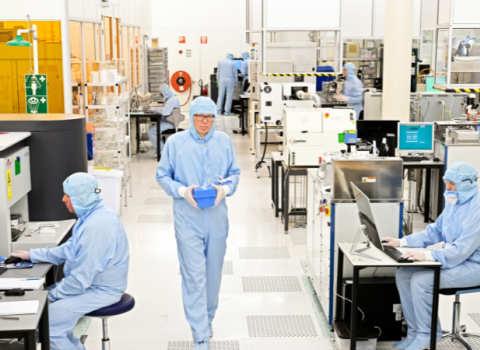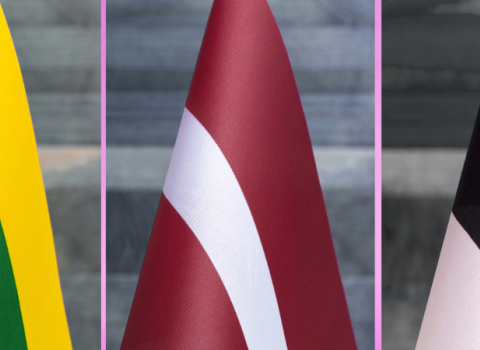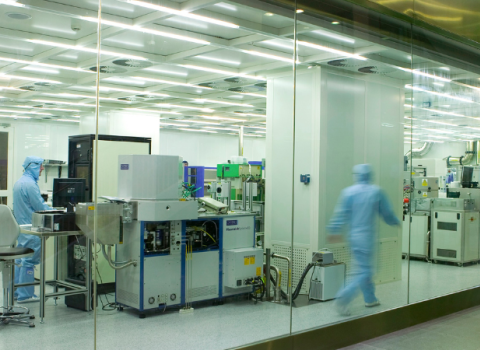Emerging technologies could help Europe build a stronger global position in microchips

Photo Credits: Jam86/BigStock
Europe may be well behind its global competitors in traditional microchip manufacturing, but a wave of emerging technologies could help it recover lost ground or even leapfrog its competition in entirely new areas, experts say.
“We shouldn’t try to compete with the TSMCs of the world today,” says Francis Deprez, Belgium’s lead delegate to the Chips Joint Undertaking and Chair of its Public Authorities Board, referring to Taiwan Semiconductor Manufacturing Company, the world leader in semiconductor manufacturing. “We need to capitalize on them and complement them with novel technologies.”
Those technologies include the use of new materials, such as silicon carbide and gallium arsenide, complemented with innovative system design. For example, specialised “chiplets” can help accelerate innovation at lower costs by stacking more generic chips and heterogeneous technologies into novel, higher-performance units, increasing functionality.
Europe has always been strong in mixed analogue-digital chip design, Deprez notes in an interview. He also mentions IMEC, the Leuven-based, independent nanoelectronics R&D hub, and ASML, the Dutch maker of advanced lithography equipment employed by the most advanced chips manufacturers. ASML is the leading supplier of such equipment globally.
That gives Europe a unique role in the global microchips ecosystem, even if much of the chip manufacturing happens elsewhere. “What we are very good at in Europe is our brains,” says Deprez, who is also a scientific advisor to the government of Flanders. “Many things start with us. We need to try to ensure more of this is translated into European industry growth.”
New opportunities at the edge
According to Paolo Azzoni, head of European Technology Programmes at Eurotech Group, Europe still has a strong opportunity to lead in edge computing, an approach based on decentralised processing close to where data is generated. By reducing reliance on central cloud infrastructure, it enables greater system autonomy and resilience, minimises data transfer, and enhances security and data confidentiality. It is particularly relevant in critical sectors, such as mobility, healthcare, and energy. Eurotech Group designs and delivers advanced edge computing and industrial Internet of Things (IIoT) hardware and software solutions for a wide range of industrial applications.
“Europe already holds a strong position in edge computing and must now move toward edge AI,” Azzoni, who also serves as Secretary General of the INSIDE Industry Association — representing the electronic components and systems value chain within the EU Chips Joint Undertaking — said in an interview. “Adding AI to edge computing significantly amplifies its value by enabling intelligent decision-making directly at the data source. Edge AI provides faster response times, improved autonomy, reduced bandwidth and energy consumption, with enhanced privacy and security. This is especially critical in sectors like healthcare, mobility, and industrial automation, where responsiveness, reliability, and data confidentiality are essential,” said Azzoni.
Europe also leads in a particular type of AI called neuromorphic computing, Azzoni contends. Neuromorphic systems process information mimicking the structure and functioning of the human brain, enabling ultra-low power consumption and real-time learning. This makes them particularly suited for edge applications where energy efficiency and adaptability are critical.
Azzoni emphasises that Europe should prioritise investments in emerging areas such as CMOS-based quantum computing, which stands out for its potential to scale using well-established semiconductor manufacturing processes. By building on existing CMOS infrastructure, this approach promises smoother integration into current technology ecosystems, as well as cost-effective development. As quantum computing moves from research to real-world applications, CMOS-based architectures could accelerate Europe’s ability to deliver practical, deployable solutions.
Drawing on Europe’s downstream expertise
Many of Europe’s biggest opportunities stem from its leadership in downstream industries, such as automotive, healthcare, defence and energy, according to Azzoni. Chip designers work closely with end-customers to understand emerging technology needs and then propose solutions that require an interdisciplinary R&D covering the entire technology spectrum, from semiconductors, to integrated systems, software and the final application.
The growth in demand for electric vehicles, for example, led scientists to turn to silicon
carbide, which helps manage power in high-power applications, such as electric vehicles, better than pure-silicon-based microchips. STMicroelectronics, a French-Italian semiconductor manufacturer, is building a €5 billion microchip factory in Sicily to produce these chips, and it expects car manufacturers to be key customers.
But the transformation of the automotive industry goes beyond hardware. The rise of the software-defined vehicle is turning the car into a digital platform, where software controls everything from energy management and driver assistance to connectivity and cybersecurity. As vehicles become more connected and autonomous, software is becoming as critical as semiconductors. To stay competitive, Europe must invest not only in advanced chips, but also in the software ecosystems and skills that underpin next-generation mobility.
Finally, photonics, another niche area in which Europe is strong, offer higher transmission speeds with lower power consumption, a combination which is important for all kinds of uses, from telecommunications to data centres and high-performance computing. “We are continuously seeking novel technologies to grow the business, but also to solve specific needs - for example, the need to use less power,” says Deprez. If Europe keeps pushing where it is strongest at – in research, technology, specific design, and materials – it could maintain a prominent position in shaping the future of global chips.





 A unique international forum for public research organisations and companies to connect their external engagement with strategic interests around their R&D system.
A unique international forum for public research organisations and companies to connect their external engagement with strategic interests around their R&D system.